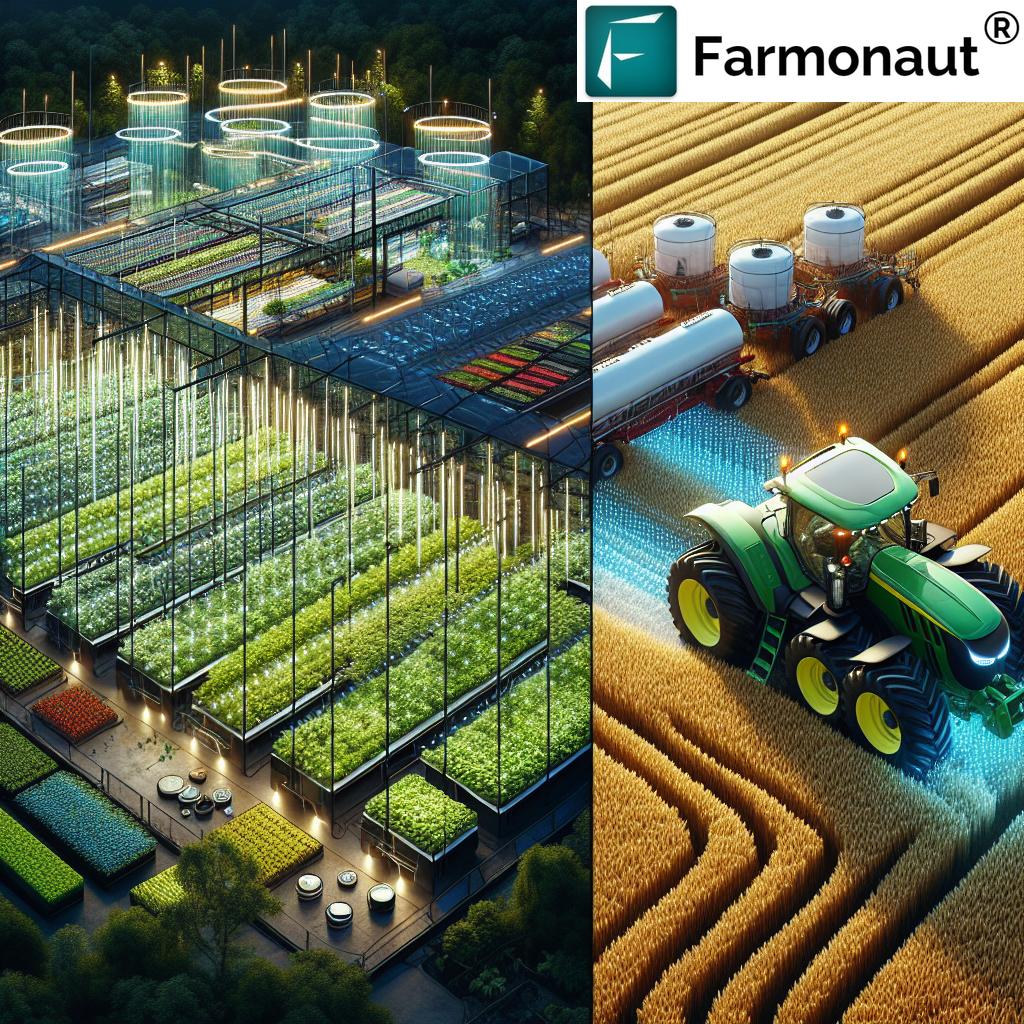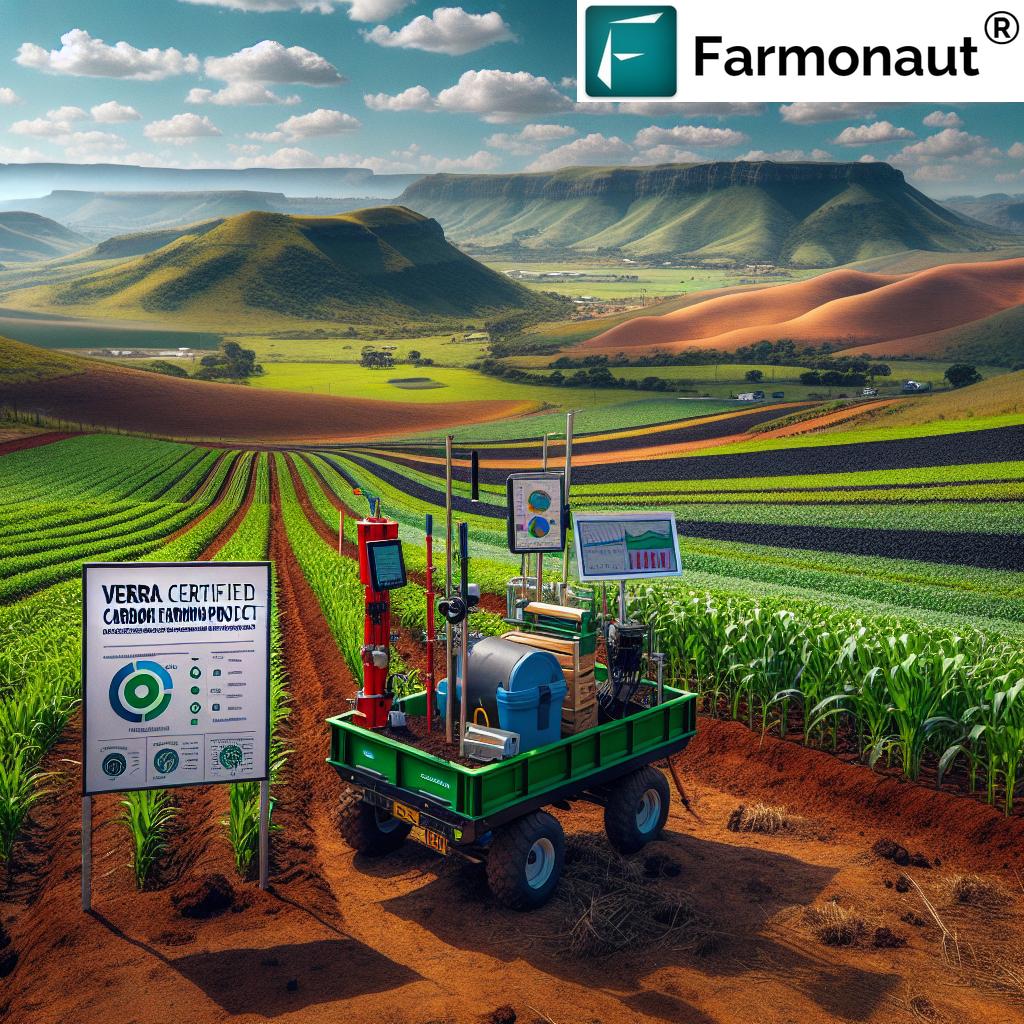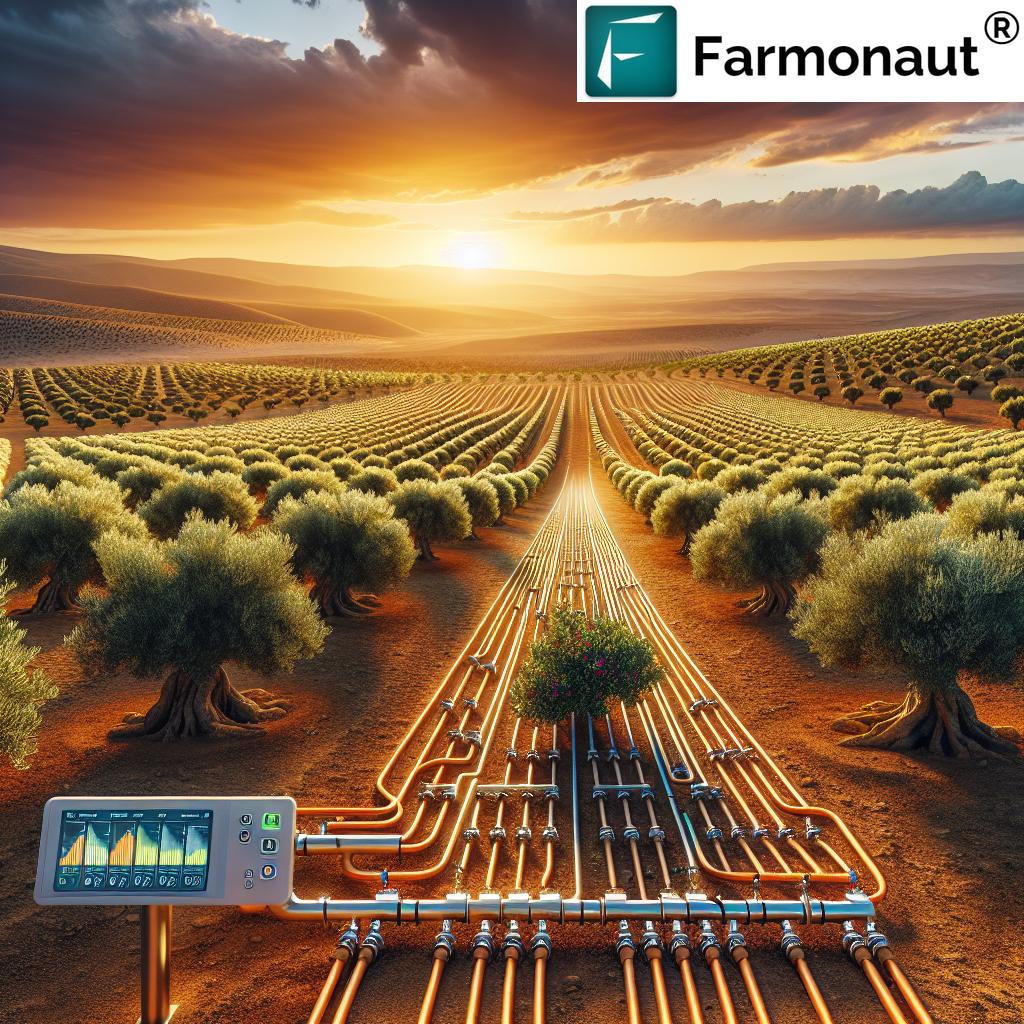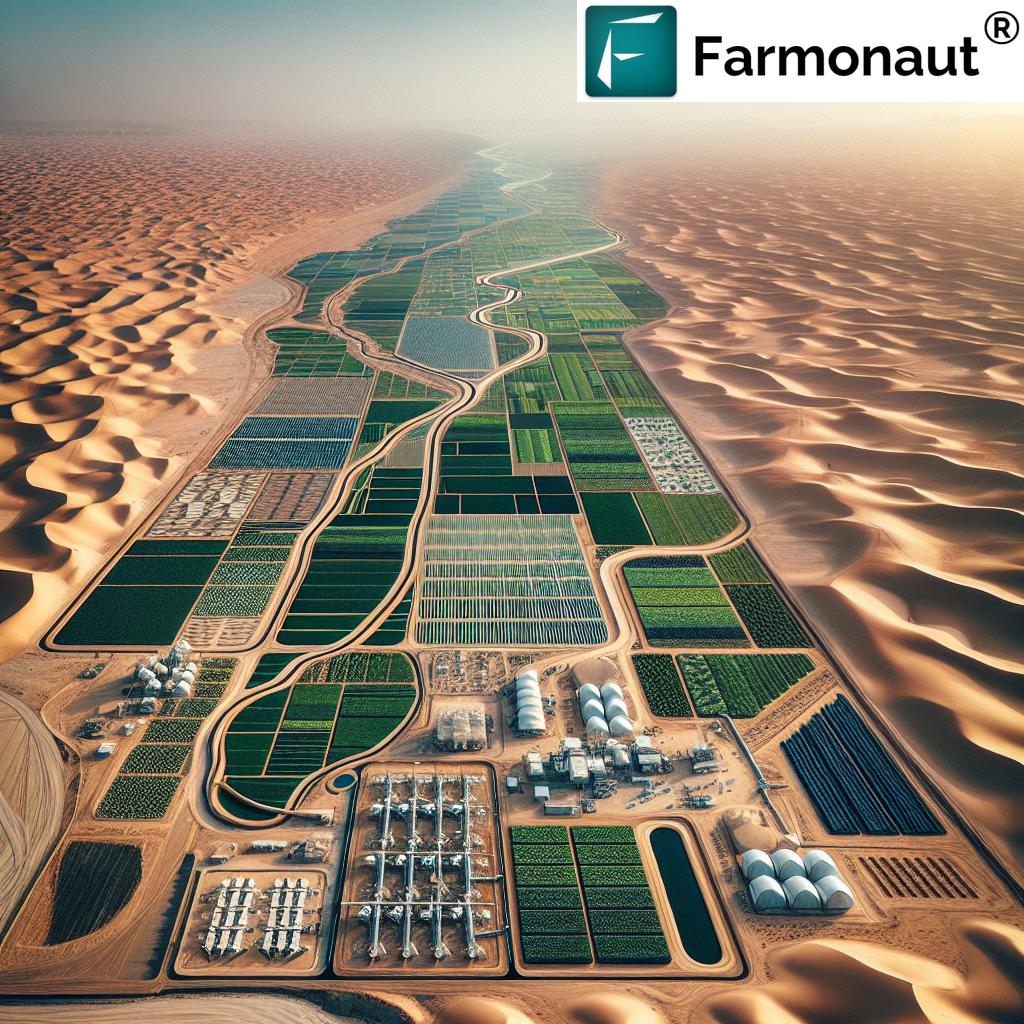Namibia’s Green Revolution: Precision Farming Techniques Boost Agricultural Self-Reliance in Kavango Region

“Namibia’s green schemes aim to reduce import dependency, with the government investing in agricultural infrastructure upgrades across the Kavango Region.”
In the heart of southern Africa, Namibia is embarking on a transformative journey to revolutionize its agricultural sector. As we delve into the challenges and opportunities facing this drought-prone nation, we’ll explore how precision farming techniques are reshaping the landscape of food production, particularly in the Kavango Region. This green revolution is not just about increasing crop yields; it’s a comprehensive strategy to enhance agricultural self-reliance and address pressing food security concerns.
The Current State of Namibian Agriculture
Namibia’s agricultural sector faces significant hurdles in its quest to boost food production and reduce the nation’s heavy reliance on imports. According to a 2023 World Bank report, an astounding 97% of processed agricultural products in Namibia come from abroad. This level of dependency is particularly concerning for a country that frequently grapples with drought conditions.
President Nangolo Mbumba’s recent tour of various green schemes in the Kavango Region highlighted the urgency of the situation. During his visits to Sikondo, Uvungu-vungu, Mashare Berries, and other agricultural projects, the President questioned the efficacy of these well-funded initiatives. Despite significant investments in equipment, seeds, and water resources, these schemes have yet to deliver the expected results in terms of national food production.
Challenges Facing Green Schemes
- Delayed Procurement: Farm managers reported issues with timely acquisition of essential inputs like seeds and fertilizers.
- High Power Costs: The expense of energy for farm operations is a significant burden.
- Lack of Storage Facilities: Inadequate infrastructure for storing harvested grains leads to losses from theft and moisture damage.
- Equipment Shortages: Some farms are forced to rely on borrowing machinery from other farms after their harvest is complete.
These challenges underscore the need for a more efficient and sustainable approach to agriculture in Namibia. This is where precision farming techniques come into play, offering solutions to optimize resource use and improve production efficiency.
The Promise of Precision Farming
Precision farming is emerging as a game-changer for Namibian agriculture. At Ndonga Linena, farm manager Janno Rentel shared exciting developments in this direction. The farm has implemented a modern water pump station equipped with advanced technology to monitor power usage. This shift towards precision techniques is allowing for more efficient resource management and holds the promise of significantly boosting production.
“Despite well-funded projects, Namibia struggles with drought-resistant farming, prompting adoption of precision farming techniques to enhance agricultural self-reliance.”
Let’s explore how precision farming techniques can address specific challenges in Namibia’s agricultural sector:
Water Management
In a country where water scarcity is a persistent issue, efficient water management is crucial. Precision farming technologies can help by:
- Utilizing soil moisture sensors to optimize irrigation schedules
- Implementing drip irrigation systems for targeted water delivery
- Using satellite imagery to assess crop water needs across large areas
Crop Monitoring and Health
Regular monitoring of crop health is essential for early detection of issues and timely interventions. Precision farming offers:
- Drone-based imaging for detailed crop health assessments
- Satellite-based vegetation index mapping to track crop development
- AI-powered disease detection systems for rapid response to potential outbreaks
Resource Optimization
Making the most of available resources is key to sustainable agriculture. Precision farming helps by:
- Providing variable rate application of fertilizers based on soil nutrient maps
- Optimizing planting densities using historical yield data and soil conditions
- Implementing GPS-guided machinery for reduced overlap and improved efficiency
To illustrate the potential impact of precision farming techniques in Namibia’s Kavango Region, let’s look at a comparative analysis:
| Farming Aspect | Traditional Methods | Precision Farming Techniques | Estimated Improvement (%) |
|---|---|---|---|
| Water Usage Efficiency | Flood irrigation, manual scheduling | Drip irrigation, sensor-based scheduling | 30-50% |
| Fertilizer Application Accuracy | Uniform application across fields | Variable rate application based on soil needs | 20-30% |
| Pest and Disease Management | Reactive, blanket treatments | Early detection, targeted treatments | 40-60% |
| Harvest Prediction Accuracy | Based on historical averages | AI-powered predictions using real-time data | 50-70% |
| Overall Crop Yield | Varies widely due to inconsistent practices | More consistent, optimized yields | 15-25% |
This table clearly demonstrates the potential for significant improvements across various aspects of farming through the adoption of precision techniques. By implementing these advanced methods, Namibia’s green schemes could see substantial increases in efficiency and productivity.
Government Initiatives and Support
The Namibian government is taking proactive steps to address the challenges facing the agricultural sector. Agriculture Minister Calle Schlettwein acknowledged past difficulties but highlighted ongoing efforts to revitalize the green schemes:
- Investment of nearly N$60 million since 2020 to replace old equipment and update farm infrastructure
- Gradual funding increases to support the transition to more efficient farming practices
- Collaboration with traditional and regional leaders to address food production challenges
These initiatives demonstrate a commitment to improving the agricultural landscape and fostering food security in Namibia. However, the transition to precision farming requires not only financial investment but also technical expertise and support.
The Role of Technology in Namibia’s Agricultural Future
As Namibia embraces precision farming techniques, the role of technology becomes increasingly crucial. Advanced agricultural technologies can provide the tools and insights needed to overcome the challenges faced by farmers in the Kavango Region and beyond.
Farmonaut, a pioneering agricultural technology company, offers solutions that could significantly benefit Namibia’s green schemes. Through its satellite-based farm management platform, Farmonaut provides valuable services such as:
- Real-time crop health monitoring
- AI-based advisory systems
- Resource management tools
These technologies align perfectly with Namibia’s goals of enhancing agricultural self-reliance and addressing food security concerns. By leveraging satellite imagery and advanced analytics, farmers can make more informed decisions about irrigation, fertilizer usage, and pest management.
To explore how Farmonaut’s technology can revolutionize farming practices, check out their web app:
Benefits of Implementing Advanced Agritech Solutions
- Efficient Water Management: In a drought-prone region like Kavango, optimizing water use is critical. Satellite-based monitoring can help farmers identify areas of water stress and adjust irrigation accordingly.
- Improved Crop Monitoring: Regular satellite imagery allows for early detection of crop health issues, enabling timely interventions to prevent yield losses.
- Data-Driven Decision Making: Access to real-time data and AI-powered insights can help farmers make more informed decisions about planting, fertilizing, and harvesting.
- Resource Optimization: By precisely targeting inputs like fertilizers and pesticides, farmers can reduce costs and minimize environmental impact.
For those interested in integrating these advanced technologies into their farming operations, Farmonaut offers both mobile and web-based solutions:
Community-Driven Initiatives and Collaboration
The success of Namibia’s green revolution depends not only on technology but also on strong community involvement and collaboration. During his tour, President Mbumba emphasized the importance of engaging traditional and regional leaders in addressing food production challenges.
Community-driven initiatives can play a crucial role in:
- Sharing knowledge and best practices among farmers
- Pooling resources for investment in advanced farming technologies
- Creating local markets and supply chains to reduce dependency on imports
By fostering a collaborative approach, Namibia can create a more resilient and sustainable agricultural sector.
Overcoming Budgetary Constraints
One of the significant challenges facing Namibia’s green schemes is budgetary constraints. However, the adoption of precision farming techniques and advanced technologies can actually help address this issue in several ways:
- Reduced Input Costs: By optimizing the use of water, fertilizers, and pesticides, farms can significantly reduce their operational expenses.
- Improved Yield Prediction: Accurate yield forecasts can help in better financial planning and resource allocation.
- Increased Productivity: Higher yields and more efficient use of land can lead to improved profitability, potentially offsetting initial technology investments.
For those looking to implement these technologies while managing costs, Farmonaut offers flexible pricing options:
The Future of Food Production in Namibia
As we look to the future of agriculture in Namibia, particularly in the Kavango Region, the integration of precision farming techniques and advanced technologies offers a promising path forward. By embracing these innovations, Namibia can:
- Enhance drought resilience through improved water management
- Increase crop yields and quality through data-driven decision making
- Reduce dependency on imports by boosting local production capabilities
- Create a more sustainable and environmentally friendly agricultural sector
The journey towards agricultural self-reliance will require continued investment, collaboration, and a willingness to adopt new technologies. However, the potential benefits for food security, economic growth, and environmental sustainability make this transformation essential for Namibia’s future.

Conclusion
Namibia’s green revolution in the Kavango Region represents a critical step towards achieving agricultural self-reliance and food security. By embracing precision farming techniques and leveraging advanced technologies, the country is positioning itself to overcome longstanding challenges in food production.
The combination of government support, community involvement, and innovative agritech solutions offers a powerful formula for transforming traditional farming practices. As Namibia continues to invest in agricultural infrastructure and adopt data-driven approaches to farming, the prospects for a more productive and sustainable agricultural sector grow brighter.
For those interested in exploring how satellite-based farm management solutions can contribute to this transformation, Farmonaut’s API provides a wealth of data and insights:
For developers looking to integrate these capabilities into their own applications, comprehensive documentation is available:
As we move forward, the success of Namibia’s green revolution will depend on the continued collaboration between farmers, government agencies, technology providers, and communities. By working together and leveraging the power of precision farming, Namibia can build a more resilient, productive, and self-reliant agricultural sector that will benefit generations to come.
FAQ Section
- Q: What are green schemes in Namibia?
A: Green schemes in Namibia are government-initiated agricultural projects aimed at increasing food production, reducing import dependency, and promoting agricultural self-reliance. These projects typically involve investments in irrigation infrastructure, modern farming techniques, and support for local farmers. - Q: How does precision farming differ from traditional farming methods?
A: Precision farming uses advanced technologies like satellite imagery, sensors, and data analytics to make more informed and efficient farming decisions. Unlike traditional methods, precision farming allows for targeted application of resources (water, fertilizers, pesticides) based on specific crop and soil needs, leading to optimized yields and reduced waste. - Q: What are the main challenges facing agriculture in Namibia’s Kavango Region?
A: Key challenges include water scarcity due to frequent droughts, lack of modern storage facilities, delayed procurement of essential inputs, high power costs, and the need for more efficient resource management. Additionally, the region struggles with optimizing farm resource use and improving overall productivity. - Q: How can satellite-based farm management solutions benefit Namibian farmers?
A: Satellite-based solutions provide real-time crop health monitoring, enable precise water management, offer AI-driven insights for decision-making, and help in early detection of pest and disease issues. These technologies can significantly improve resource efficiency, reduce costs, and increase crop yields. - Q: What steps is the Namibian government taking to support agricultural development?
A: The government is investing in agricultural infrastructure upgrades, including modern water pump stations and improved storage facilities. They have allocated funds for replacing old equipment and are working on collaborative approaches with traditional and regional leaders to address food production challenges. - Q: How can precision farming techniques help in drought-resistant farming?
A: Precision farming techniques enable more efficient water use through targeted irrigation based on real-time soil moisture data. They also help in selecting and managing drought-resistant crop varieties and implementing conservation agriculture practices, all of which contribute to better drought resilience. - Q: What role do community-driven initiatives play in Namibia’s agricultural development?
A: Community-driven initiatives are crucial for knowledge sharing, resource pooling, and creating local markets. They help in adopting new farming practices, implementing shared technology solutions, and building a more resilient local agricultural ecosystem. - Q: How can farmers in Namibia access and implement precision farming technologies?
A: Farmers can access precision farming technologies through various platforms and service providers. Companies like Farmonaut offer satellite-based farm management solutions accessible via web and mobile applications. Government initiatives and agricultural cooperatives also play a role in facilitating access to these technologies. - Q: What are the potential long-term benefits of Namibia’s green revolution?
A: The long-term benefits include increased food security, reduced reliance on imports, improved agricultural productivity, more sustainable use of natural resources, enhanced rural economic development, and greater resilience to climate change impacts. - Q: How can precision farming contribute to environmental sustainability in Namibia?
A: Precision farming contributes to environmental sustainability by optimizing the use of water and chemicals, reducing soil degradation, minimizing the carbon footprint of agricultural activities, and promoting practices that conserve biodiversity and natural ecosystems.
Additional Resources
For those interested in learning more about precision farming and its applications in Namibia, we recommend the following video resources:
This video demonstrates how satellite technology is revolutionizing land use in agriculture, which is particularly relevant for Namibia’s efforts to optimize its agricultural practices.
While this case study focuses on Egypt, the principles of precision crop area estimation can be applied to Namibia’s agricultural development efforts.
This comprehensive guide for interpreting satellite data can be invaluable for Namibian farmers and agricultural professionals looking to leverage these technologies.
This overview of how satellite data is improving farming practices provides insights that can be directly applied to Namibia’s agricultural transformation efforts.
By embracing these advanced agricultural technologies and precision farming techniques, Namibia is poised to transform its agricultural sector, enhance food security, and pave the way for a more sustainable and self-reliant future. The green revolution in the Kavango Region serves as a model for what can be achieved when innovation, government support, and community collaboration come together to address pressing agricultural challenges.















